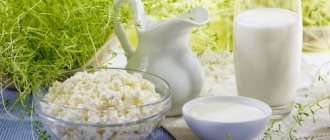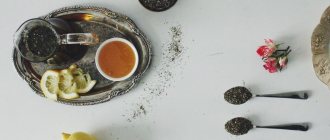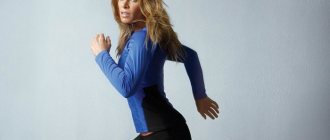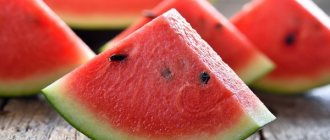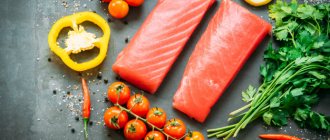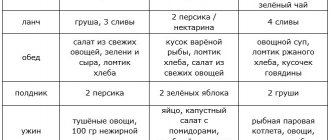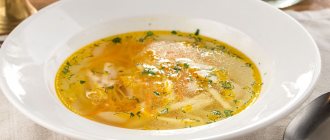Slag-free diet – this is a diet aimed at maximally quickly cleansing the digestive tract of substances (toxins) that are harmful and unnecessary to the body. This treatment regimen helps relieve the work of the stomach and intestines by accelerating the processes of digestion and assimilation of low-calorie foods.
A slag-free diet is necessary before conducting diagnostic examinations (colonoscopy, sigmoidoscopy, irrigoscopy, ultrasound, MRI and surgical interventions on the abdominal organs), as well as for improving the health of the body. Its use does not always require a doctor's prescription.
The slag-free diet is carried out for a week. The food uses natural, environmentally friendly, unrefined products. During this time, the functioning of the digestive system improves and is restored, and extra pounds disappear (up to 5 kg).
The essence
The basic principle of a slag-free diet is contained in its name - the exclusion from the diet of foods that cause the deposition of slag stones on the intestinal walls, and the inclusion of products that have the ability to dissolve or absorb these stones and then remove them out.
As you know, sludge formation in the intestines is caused by food, alcohol and tobacco. The slag-free diet includes low-calorie and easily digestible meals made from foods that are high in fiber. The main advantage of such nutrition is that it allows you to quickly cleanse the intestines of “garbage”, reduce body weight and the appearance of cellulite, feel a surge of strength, gain energy, and improve skin condition. Depending on the goal, there are various options for a slag-free diet.
Preventative cleaning
It is designed for 3 days and is aimed exclusively at removing waste deposits from the intestines. The diet consists of only fruits, berries and water.
Weight loss program
Designed for 1-2 weeks. The calorie content of the daily diet is 700 Kcal, the result is a weight loss of 3-4 kg per week. The menu is allowed to include:
- vegetables and fruits;
- porridge cooked in water;
- low fat fermented milk products;
- vegetable and low-fat meat broths;
- fish;
- lean veal and white poultry;
- juices, compotes.
Prohibited dishes:
- porridge with milk;
- canned food;
- fast food;
- pork, lamb;
- mushrooms;
- sausages, smoked meats;
- baked goods;
- confectionery;
- alcohol;
- carbonated drinks.
Special diet
It is prescribed before abdominal surgery or examination of the intestine using ultrasound, colonoscopy, irrigoscopy, and also as one of the means of therapy for intestinal obstruction. Depending on the required degree of cleansing of the gastrointestinal tract, its duration ranges from 3 to 6-7 days. It is allowed to eat light broths, lean fish, white bread, fruits, boiled vegetables, and low-fat fermented milk products. Food that is difficult to digest and contains coarse fiber is prohibited. The dietary regimen completely excludes from the diet:
- meat;
- black bread;
- raw vegetables and fruits;
- legumes;
- nuts;
- sweets.
List of slag-free diet products
Authorized Products
| Product type | Products |
| Cereals for making water-based porridges |
|
| Boiled (stewed) or baked vegetables |
|
| Low-fat fermented milk products (0-2.5%) and cheeses with low animal fat content (up to 20%) |
|
| Lean meat, boiled (stewed) or baked |
|
| Lean fish, steamed or baked in the oven |
|
| Boiled seafood |
|
| Eggs |
|
| Fresh vegetables for salads |
|
| Greenery |
|
| Fresh fruits and berries |
|
| Flour products |
|
| Beverages |
|
| Seasonings |
|
| Unrefined vegetable oils for cooking and salad dressings |
|
Prohibited Products
| Product type | Products |
| Cereals |
|
| Vegetables |
|
| Greenery |
|
| Eggs |
|
| Dairy |
|
| Fermented milk products with high fat content (more than 2.5%) and cheeses (more than 20%) |
|
| Fatty meat and lard |
|
| Fatty fish |
|
| Broths |
|
| Dried fruits and berries |
|
| Flour products |
|
| Sweets |
|
| Beverages |
|
| Spicy seasonings and sauces |
|
| Refined deodorized vegetable oils |
|
| Smoked products |
|
| Marinades and pickles |
|
| Canned products |
|
| Other Ingredients |
|
Sample menu
The diets of different versions of the slag-free diet are different. 3-day preventive cleansing is its most ascetic type. The menu of a one- to two-week weight loss program is quite balanced in the composition of nutrients, vitamins and minerals. A special diet excludes all foods that take a long time to digest or cause gas.
It is important. Thermal processing of products should be minimal. Meat and fish can be boiled or baked; vegetables and fruits should preferably be eaten raw. After meals, it is recommended to drink a glass of still mineral water.
For 3 days
This menu is for preventative cleaning. The daily set of products indicated in the table should be divided into 4-5 meals. At night, a glass of fermented milk drink with zero fat content is allowed.
| Days | Option 1 | Option 2 |
| 1 | apple, 400 g berries, 2 bananas, water | 0.5 kg boiled white cabbage, water |
| 2 | banana, apple, 2 pears, 200 g berries, water | 1 kg of boiled leeks, seasoned with 1 tbsp. l. vegetable oil, water |
| 3 | apple, 2 pears, 400 g berries, water | 1 kg celery and cucumber salad, seasoned with lemon juice, water |
For a week
This menu option is for a one- to two-week weight loss program. Meals are served three times a day, between main meals you are allowed to have snacks - eat unsweetened fruit. Before going to bed, you can drink a glass of low-fat kefir. If the duration of the slag-free diet is 14 days, the menu can be repeated.
| Days/meals | Breakfast | Dinner | Dinner |
| 1 | 200 g boiled cabbage, a glass of water | vegetable soup, boiled brown rice (200 g), compote | steamed fish, lettuce |
| 2 | apple, citrus juice | steamed veal (200 g), vegetable salad, compote | 150 g 5% cottage cheese, a glass of water |
| 3 | fruit salad, fresh carrot and apple | lentil porridge (200 g), lettuce, slice of bread | zucchini stew, green tea |
| 4 | green apple, citrus fresh | steamed cauliflower, 150-200 g boiled brown rice, apple | 200 g fish baked in foil, a slice of bread, a glass of water |
| 5 | grated carrots seasoned with vegetable oil, slice of bread, compote | vegetable soup, 200 g steamed veal, slice of bread, juice | vegetable salad dressed with sour cream, a glass of water |
| 6 | oatmeal with water, 1 fruit | vegetable salad with sour cream, juice | 200 g cooked brown rice, lettuce, 1 citrus |
| 7 | kefir mashed potatoes, cucumber smoothie | vegetable soup, 100-150 g boiled fish, compote | vegetable salad, kefir |
Special
This type of slag-free diet provides four meals a day; the menu for 3 days can be as follows:
| Days/meals | Breakfast | Dinner | Afternoon snack | Dinner |
| 1 | boiled broccoli, herbal drink | vegetable soup, 200 g boiled fish | salad of boiled carrots and beets, jelly | 200 g mashed potatoes on water, kefir |
| 2 | fruit salad or several fruits, green tea | 150 g cooked brown rice, mineral water | baked pumpkin | 150 g cottage cheese, fresh fruit |
| 3 | boiled beets, green tea | vegetable soup, 200 g steamed fish | banana | buckwheat on water, compote |
What is a colonoscopy
This is the name of the method of studying the condition of the colon using special equipment.
A miniature television camera is inserted rectally (through the anus) and transmits a video signal through a flexible cable, which is displayed on the monitor. Observing the image, the gastroenterologist makes a diagnosis and, based on the results of the examination, prescribes treatment, if necessary. The procedure is painful, so it is often performed under anesthesia. Colonoscopy can combine diagnosis with treatment, removing polyps and taking tissue samples for biopsy.
Recipes
The dishes included in the slag-free diet are extremely simple, since they do not require frying, sauces, seasonings, and the list of products for their preparation is small.
Vegetable puree soup
Ingredients: carrots, broccoli, onions, tomatoes, parsley, kefir.
Preparation. Wash the vegetables, peel them, cut them into pieces, put them in a saucepan and add water. Cook over medium heat for about half an hour. Remove the vegetables from the broth and grind them in a blender until smooth, then add salt and mix with the broth. When serving, season with kefir and garnish with chopped herbs.
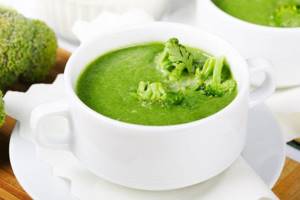
Dietary mashed potatoes
Peel the potatoes, wash and cut them. Place in boiling water (there should be a little water, just enough to cover the product), cook for 20 minutes. Drain the water, mash the potatoes, add salt and a little kefir, and whisk.
Fish baked in foil
Rinse the pollock or hake carcass, cleared of scales and entrails, cut off the head and tail, rub with salt, and lightly sprinkle with lemon juice. Grease a sheet of food foil with vegetable oil, place the fish on it, turning the ends of the foil up. Bake in the oven at 200°C for about 30 minutes.
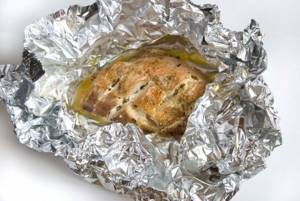
Steamed veal in a slow cooker
Clean the meat from veins, cut into pieces 2-3 cm thick, lightly beat and add salt. Place the veal on the multicooker rack, pour water into the bowl and add bay leaf and allspice. Cook for 40 minutes in the “Steam” mode. The finished dish can be decorated with fresh parsley or celery. Steamed veal in a slow cooker
Young zucchini stew
Ingredients:
- onion;
- carrot;
- zucchini;
- vegetable oil;
- salt;
- Bay leaf.
Preparation. Wash the vegetables, peel the onions and carrots, remove the seeds from the peppers. Cut the zucchini, carrots and peppers into cubes, and the onion into strips. Place everything in a thick-walled saucepan, add salt and a couple of tablespoons of vegetable oil, add water and simmer covered for 15 minutes.
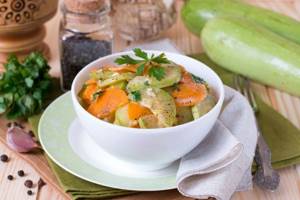
Salad "Health"
Cut the cucumbers, apple and celery stalk into small cubes, finely chop a few sprigs of parsley. Combine everything, lightly salt, add a teaspoon of olive oil and lemon juice, mix gently.
Fruit salad
Ingredients:
- apples;
- bananas;
- tangerines;
- kiwi;
- yogurt.
Preparation. Peel bananas and tangerines, peel and core apples. Cut all the fruits into cubes, combine, mix and place in bowls. Pour yogurt on top and garnish with thinly sliced orange zest and mint sprigs.

Carrot-apple fresh juice
It is recommended to prepare the drink immediately before drinking. It will require 4 small carrots and 1 apple. Peel the carrots and apple, chop coarsely, place in a juicer and squeeze out the juice.
Cucumber smoothie
Cut the peeled young cucumbers into medium-sized pieces, add a little honey and a few mint leaves. Grind in a blender until smooth and pour into glasses, after cooling.

Quitting the diet
An abrupt exit from a slag-free diet is categorically not recommended! The diet of this food system is significantly different from the usual one, and its sudden change can cause negative consequences: disturbances in the gastrointestinal tract, constipation or diarrhea, and the formation of fecal stones in the intestines.
To switch to the usual menu, nutritionists advise spending at least a week. In the first days, you should introduce more cereals into your diet, then raw vegetables. During the transition period, it is advisable not to combine proteins and carbohydrates in one meal. Fatty varieties of fish and meat, which were subject to restrictions during the slag-free diet, are recommended to be included in the menu last.
Basic principles of a slag-free diet
- You need to consume food in small portions (200 g) at least 4-5 times a day.
- Avoid fasting. There should be no more than 3 hours between meals.
- It is preferable to use porridge and fruits (berries) for breakfast, meat or fish for lunch, vegetables for an afternoon snack, and fermented milk products for dinner.
- All ingredients must be low-calorie and easily digestible.
- In the diet, it is necessary to use environmentally friendly products that are not contaminated with chemical additives (preservatives, thickeners, flavorings and dyes), and also have not undergone the refining process.
- Dishes can be steamed, boiled, or baked in the oven (without using a grill).
- Frying, baking over a fire or grilling in an oven is not allowed during cooking.
- You cannot combine cereals or potatoes with meat, fruits with vegetables or dairy products.
- Drink large volumes of water (up to 1.5-2 liters per day).
- It is useful to consume vegetable broths and soups.
- Completely avoid fatty, spicy, smoked, pickled, sweet and salty foods.
- Give preference to raw vegetables.
- Food should be varied. The dish should not be repeated more than twice within one week. A monotonous diet is a direct path to the development of hypovitaminosis.
Contraindications
There are few direct contraindications to a slag-free diet. This is, first of all, the period of pregnancy and breastfeeding, as well as the period of rehabilitation after surgery or serious illness. The technique is not suitable for professional athletes and people whose professional activities involve heavy physical activity. The limitation here is the low caloric content of the diet, which does not meet the body’s needs. This nutritional system does not apply if there is an individual intolerance to the ingredients of the diet.
Signs of a slagged organism
It also doesn’t hurt to “clean” your body if you notice the following signs:
- overwork;
- poor concentration;
- fast fatiguability;
- short temper, nervous anxiety;
- headaches, dizziness;
- problems with the oral cavity, bad breath;
- deterioration of the condition of the skin, nails, hair;
- allergic reactions;
- painful sensations in the joints.
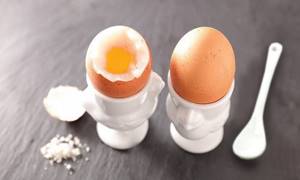
Reviews and results of losing weight
Svetlana, 24 years old
I followed a slag-free diet for two weeks. Nice, fits me perfectly! I love all the foods that are on her menu, so there were no problems in that regard. I cooked all the vegetables in a double boiler. I like the completely different taste than fried ones. I didn’t feel hungry either. The first few days I had a slight headache. Otherwise my health was normal. In 14 days I lost 4 kg, which is decent for me.
Nina Ivanovna, 40 years old
No, a slag-free diet is not for me! Look what you can eat! I’ve never been into a raw food diet, and I can’t stand it without meat at all! If I decide to use this technique, it will be only as a short-term option, a three-day cleanse. I won’t have time to lose weight, but getting my intestines in order is a useful measure.
Vadim, 35 years old
I found out about this method for losing weight by accident, I was just curious to understand what such a tricky name means. Since my digestion is not very good and my liver is aching, plus my weight has recently begun to increase, I decided to try this nutritional system on myself. I didn't really hope for the result. To my surprise and joy, in 2 weeks I became 5 kg lighter, my liver stopped aching, my stomach works like a clock. The only negative is that I had to reduce my physical activity, but this is temporary. Good technique, I recommend it.
Pros and cons of slag-free nutrition
A slag-free diet has the following advantages:
- Toxins are removed from the body, cellulite is prevented, which gives impetus to the accumulation of toxins;
- Only slag-free nutrition allows you to best cleanse your internal organs.
The disadvantages of the diet include the fact that while following it, it is not recommended to lead an active lifestyle, since you will not have enough strength for it. When eating a diet, headaches sometimes occur. But, such a sign is a good confirmation that bad substances have begun to be eliminated from the body.
Since dietary nutrition has a minimum calorie content, it cannot be followed by expectant and nursing mothers. After colds and surgeries. Limit physical activity. Before following a diet menu to remove toxins from the body, be sure to consult a doctor.
